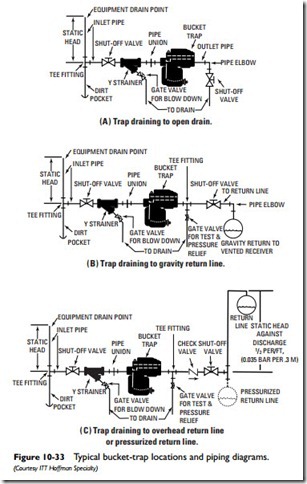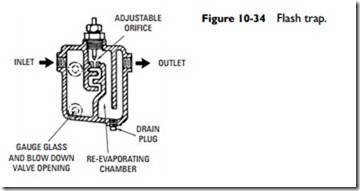Flash Traps
A flash trap (see Figure 10-34) is used to drain condensation from steam lines; steam, water, and oil heaters; unit heaters; and other equipment in which the pressure differential between the steam supply and condensation return is 5 psig or more.
The operation of a flash trap depends upon the property of condensation at a high pressure and temperature to flash into steam at a lower pressure. The condensation flows freely through the trap due to the pressure difference between the inlet and outlet orifices. The free flow of the condensation is interrupted by the introduction of steam into the inlet chamber, where it mixes with the remaining condensation. The steam heats the condensation and causes it to flash, thereby temporarily halting its flow through the orifice and allowing it to accumulate in the trap.
Except for an adjustable orifice used for adjusting the pressure differential, a flash trap contains no other moving parts. Flash traps operate intermittently. They are generally available for pressures ranging from vacuum to 450 psig.
Impulse Traps
An impulse trap (see Figure 10-35) operates with a moving valve actuated by a control cylinder. When the trap is handling condensation,
the pressure required to lift the valve is greater than the reduced pressure in the control cylinder, and consequently the valve opens, allowing a free discharge of condensation. As the remaining condensation approaches steam temperature, flashing results, flow through the valve orifice is choked, and the pressure builds up in the control chamber, closing the valve.

